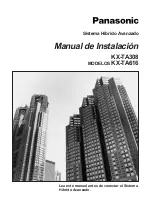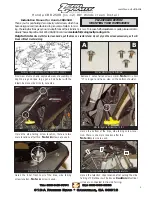
BARTINGTON INSTRUMENTS
Page 5 of 11 OM2298/3
The centres of the three vector sensors are superimposed; each orientation is denoted on the
magnetometer’s label. The point of each vector arrow indicates the positive direction of each
axis.
4. Installing the Mag648 or Mag649
4.1. Siting the Magnetometer (Environment Recommendations)
Note:
Site the magnetometer several metres from any magnetic base rock to avoid
compromising measurements.
Note:
Site the magnetometer several tens of metres from very large ferromagnetic objects
that could become magnetised and create fields exceeding the measuring range of the
sensor.
Note:
Avoid siting the sensor near any ferromagnetic objects that may be subjected to the
effects of magnetic hysteresis, which would affect the sensor in an unpredictable manner.
Note:
For these reasons, a magnetic evaluation of any proposed installation site should be
conducted to establish that it is free from magnetic contaminants. It is recommended that
such an evaluation be carried out using total field or resonance magnetometers.
4.2. Cable Recommendations
The standard magnetometer provides differential output lines for analogue signal transmission.
The advantages of this differential arrangement are very high common-mode noise rejection
and the suitability of readily available cable types. Each of the two anti-phase output lines has
low output impedance at the signal source, damping the lines and preventing ringing. Cable
inductance and capacitance considerations require the cable to be terminated with a differential
amplifier having a circa 50kΩ input impedance. This arrangement will provide some damping to
high frequencies but will attenuate the signals above the frequency range of the sensor.
Due to these effects:
• The cable pair loop resistance should not exceed 0.1 ohms per metre.
• The pair loop inductance should not exceed 0.5 micro-Henry per metre.
• The capacitance between should not exceed 52pF per metre.
• The capacitance between conductors and shield should not exceed 120pF per metre.
To optimise operational life of underwater cables and avoid physical damage to the joint during
handling:





























